

Ever spent hours painting a piece of furniture only to find streaks, chips, or stains coming through just weeks later? You’re not alone. I’ve been painting and restoring furniture for over 20 years, and I’ve made (and seen) just about every mistake in the book. The good news? Most of these pitfalls are totally avoidable.
Today, I’m sharing the top 5 mistakes to avoid when painting furniture — plus extra pro tips that will help you achieve a flawless, long-lasting finish every time. Whether you’re upcycling a charity shop find or refreshing a family heirloom, these tips will make all the difference.
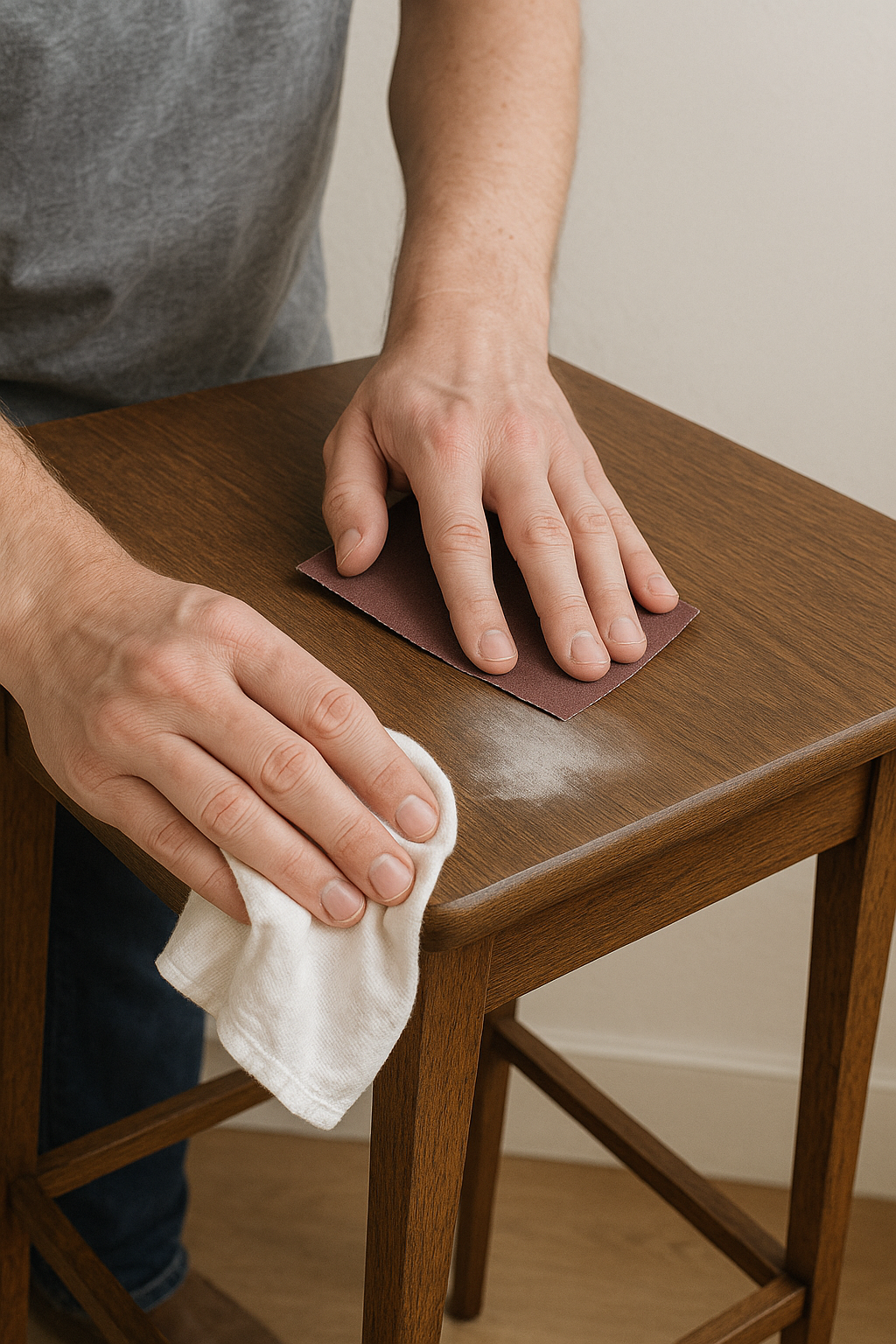
1. Skipping Proper Preparation
Preparation is everything. I know it’s tempting to dive straight into painting, but failing to clean, sand, and prep your furniture is one of the fastest ways to ruin your finish.
Dust, grease, or old wax act like a barrier between your furniture and your paint. Without a clean surface, even the best furniture paint won’t adhere properly.
👉 Quick prep checklist:
- Wash with sugar soap or mild detergent.
- Lightly sand with 180-grit for a smooth key.
- Wipe clean with a damp cloth.
Small & Co Paints are designed for superior adhesion with minimal prep, but a little effort here guarantees professional results.
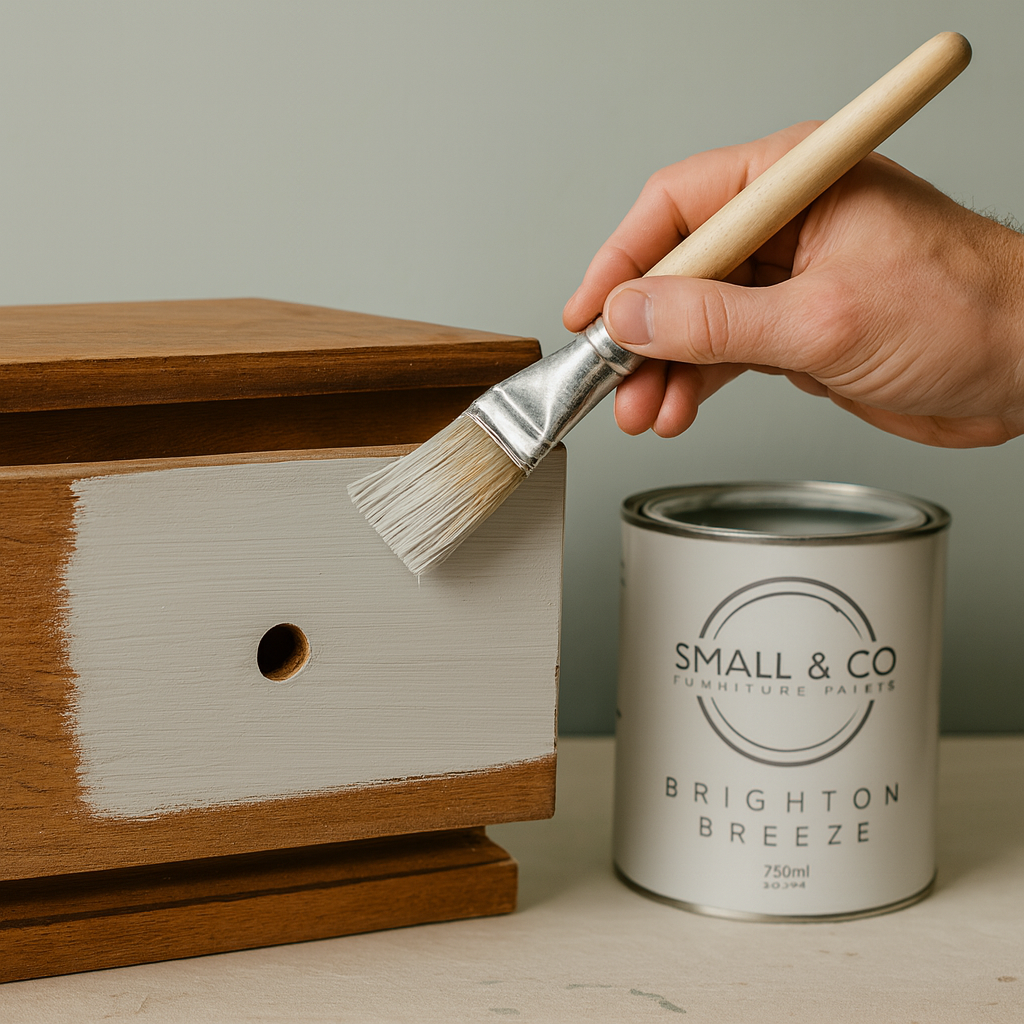
2. Painting Furniture with Coats That Are Too Thick
This is a classic DIY mistake: loading up the brush and slapping on a heavy coat. Thick coats lead to streaks, drips, and long drying times — and worse, peeling later on.
The secret? Thin, even layers.
- Apply 2–3 light coats instead of 1 heavy one.
- Let each coat dry fully before recoating (about 1–2 hours).
- Work in the direction of the wood grain for a smooth finish.
Our paints dry to the touch in 30 minutes, so there’s no excuse for rushing. Thin layers always win.
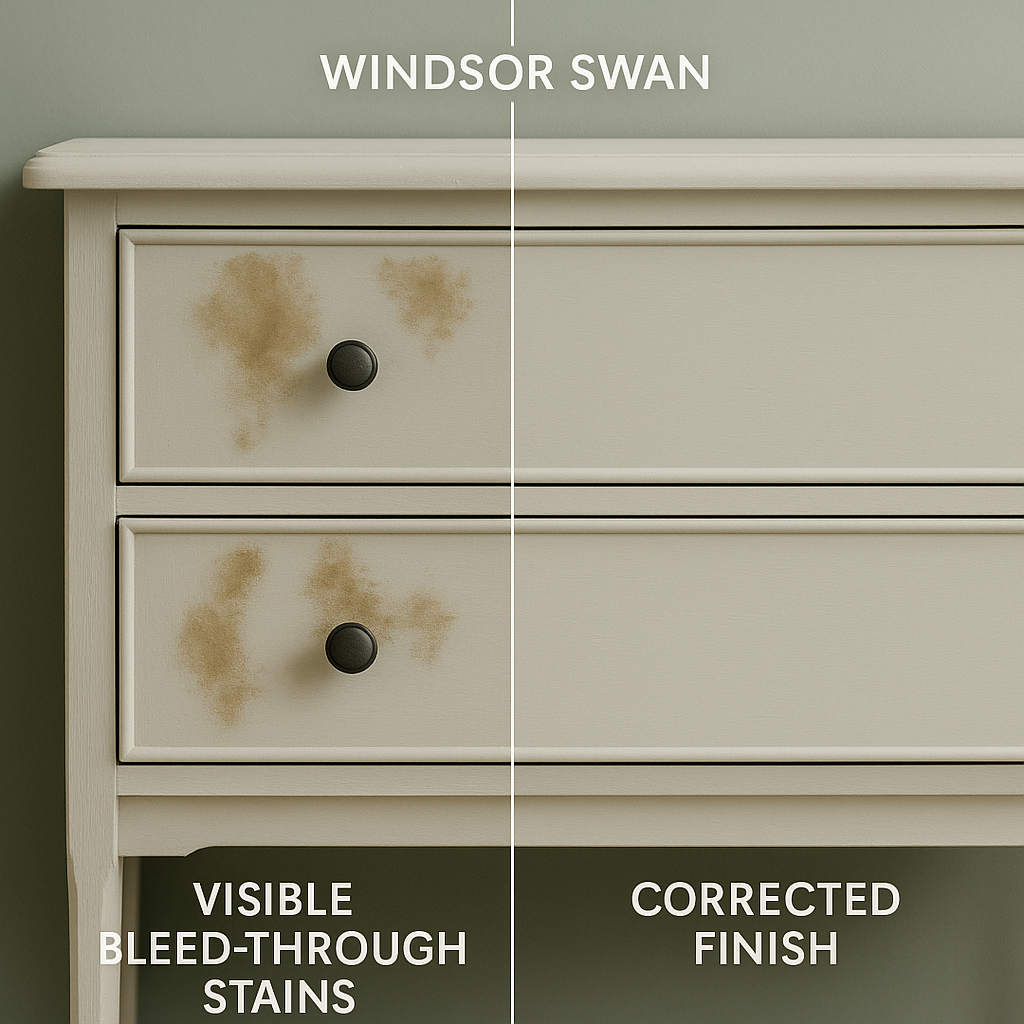
3. Forgetting to Deal with Knots and Stains
Wood is unpredictable. Pine knots, tannins in mahogany, or old stains can bleed through your paint, leaving ugly marks.
If you’re painting a pale shade like Windsor Swan or Suffolk Shell, the problem becomes really noticeable.
How to avoid it:
- Use a knotting solution on pine knots.
- Apply a stain-blocking primer for woods prone to bleed.
- Always test patch if you’re unsure.
It’s a small step that saves huge disappointment later.
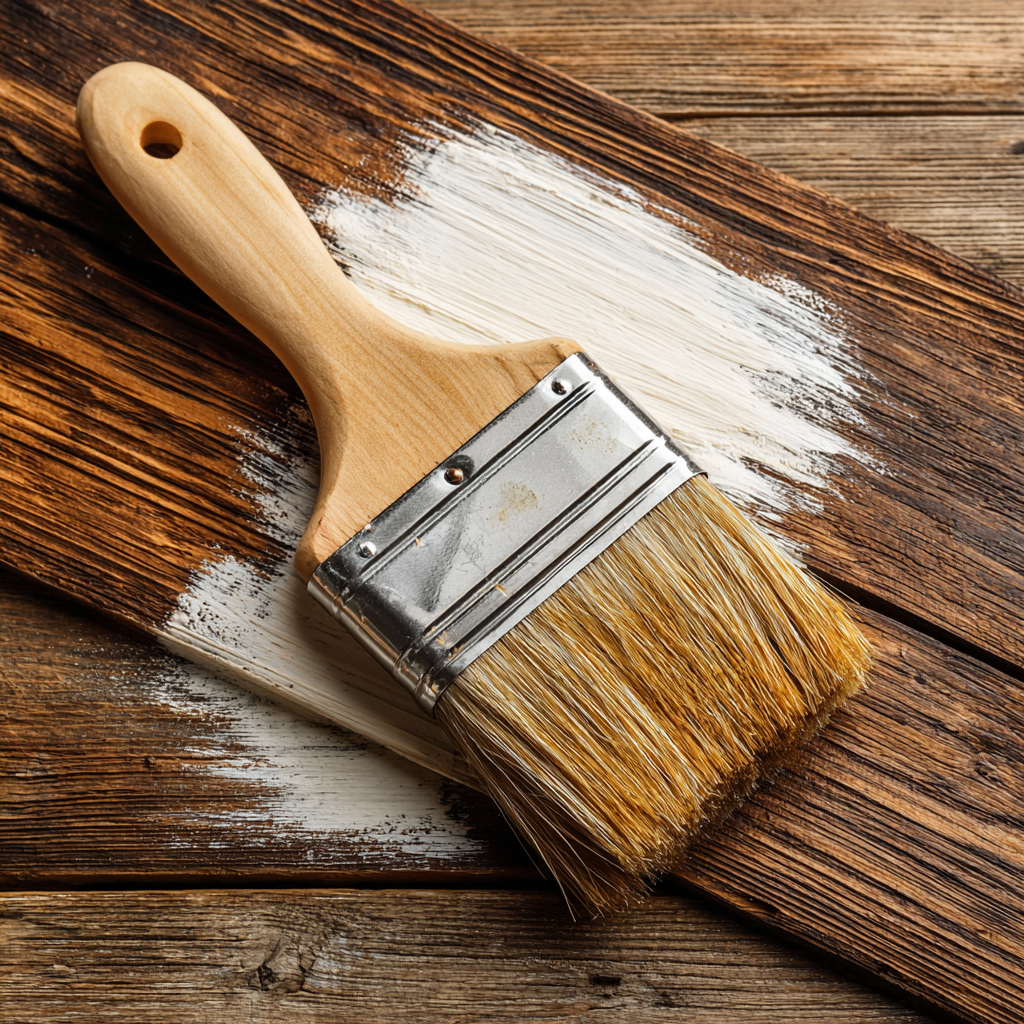
4. Using the Wrong Brushes and Rollers for Furniture Paint
Your finish is only as good as the tools you use. Even with the best furniture paint, the wrong brush or roller can leave you with streaks, drag marks, or patchy coverage.
- Brushes: A good brush holds paint without dripping, releases it evenly, and doesn’t shed bristles into your work. Synthetic bristle brushes are excellent for smooth, modern finishes, while natural bristle brushes can give great results for textured effects or when blending paints. Look for brushes with tapered bristles and a comfortable handle — they’ll give you far more control.
- Rollers: For large, flat surfaces like tabletops, cupboard doors, or wardrobes, choose a short-pile microfibre roller. Short pile ensures you don’t overload paint, keeping coats thin and even. Microfibre holds paint beautifully and helps avoid patchiness, leaving a consistent finish with fewer visible marks.
- Spray Guns: If you’ve got the setup, Small & Co paints can be used in a spray gun for a flawless, factory-smooth look. Just remember: preparation and technique matter even more when spraying.
👉 The golden rule, whichever tool you choose, is simple: apply thin, even coats and let each one dry before adding the next. That’s how you get a smooth, professional result that lasts.
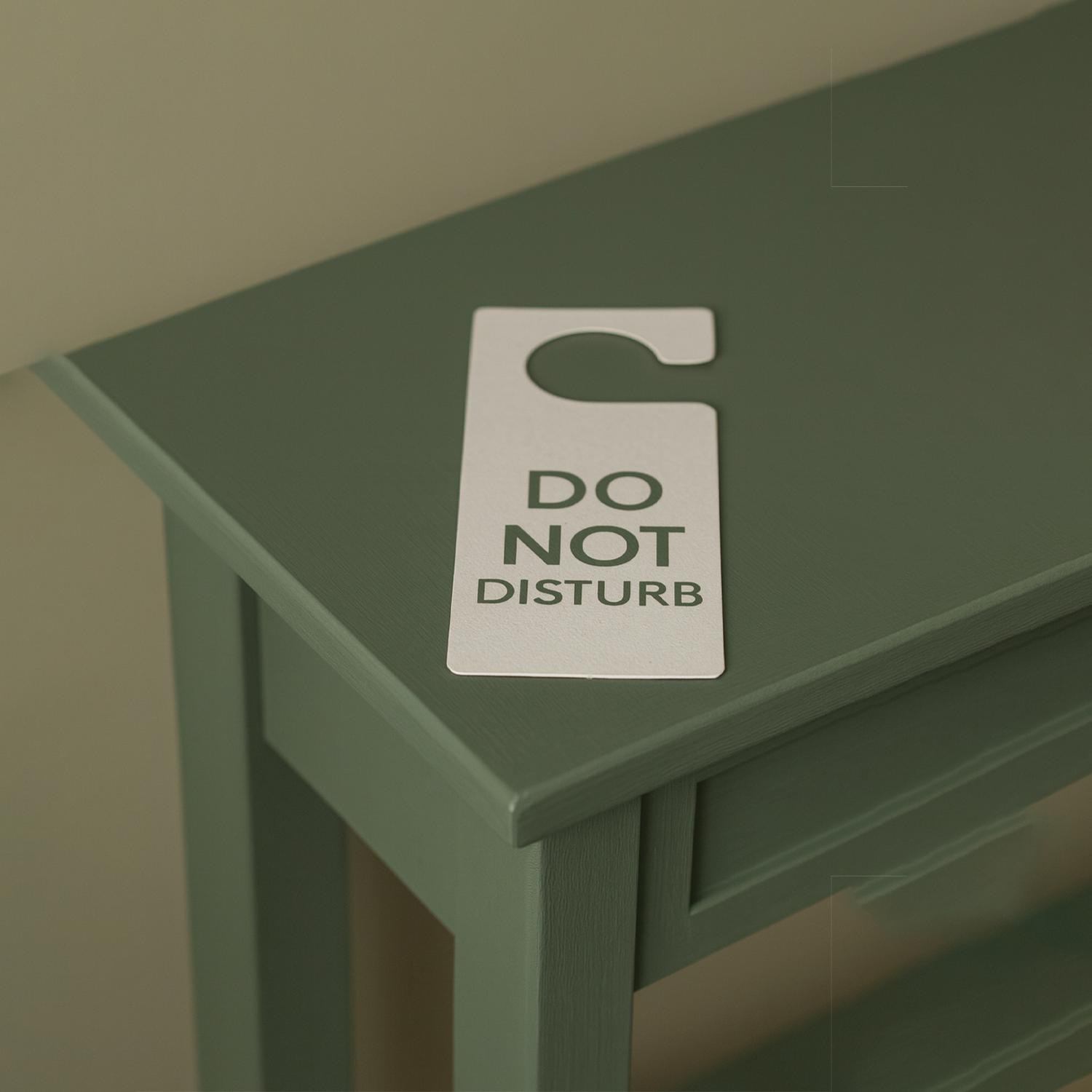
5. Rushing the Curing Process
Here’s one of the most overlooked furniture painting mistakes: confusing drying time with curing time.
Your freshly painted piece might feel dry to the touch in as little as 30 minutes, and ready for a second coat within 1–2 hours. But “touch-dry” doesn’t mean the paint is fully hardened.
Paint goes through two key stages:
- Drying: This is when the water in the paint evaporates, leaving a surface that feels dry. It happens quickly — which is why our paints are such a joy to work with.
- Curing: This is the chemical process that gives paint its ultimate strength and durability. For <a href="/collections/furniture-paint">Small & Co paints</a>, full curing takes around 14 days. During this time, the paint film is still soft and vulnerable.
👉 Why does this matter?
If you stack books on a freshly painted shelf, place a lamp on a newly painted side table, or drag chairs across a painted dining table before the paint is cured, you risk dents, scratches, or sticky patches that never quite recover.
How to Avoid Problems While Paint Cures
- Use the piece gently in the first 2 weeks.
- Avoid heavy objects, stacking, or dragging items across the surface.
- Don’t cover freshly painted furniture with cloths, cushions, or tableware — these can trap moisture and stick.
- Keep the piece in a well-ventilated, room-temperature space to help the curing process along.
Think of curing as the “hardening” stage — the moment when your project goes from looking good to being tough enough for everyday use. If you give your paint the full curing time it needs, you’ll enjoy a professional, durable finish that resists scratches, stains, and scuffs for years to come.
Patience really does pay off in furniture painting.
Extra Furniture Painting Tips for Flawless Results
Now that we’ve covered the top 5 mistakes to avoid when painting furniture, let’s dive into a few more professional tips to help you get that showroom-quality finish at home. Whether you’re a seasoned DIY painter or just starting your first project, these pointers will make the difference between an “okay” makeover and a jaw-dropping transformation.
Choose the Right Paint for the Job
Not all paints are created equal. Wall paint and emulsion simply won’t give you the durability or finish you need for furniture. That’s why using a specialist furniture paint like Small & Co makes all the difference. Our water-based, eco-friendly, VOC-free paints are designed to bond beautifully with wood, laminate, and even metal surfaces. They give superior coverage, dry quickly, and cure to a robust, long-lasting matte finish—no topcoat needed.
Test Colours Before Committing
Lighting plays a huge part in how colours look. A shade like Brighton Breeze, which feels airy and coastal in a sunlit conservatory, may appear cooler in a north-facing bedroom. Use our hand-painted colour charts or a 125ml tester tin to experiment before going all in. This simple step prevents disappointment and helps you create the perfect vibe for your home.
Don’t Forget the Details
Handles, hinges, and knobs can make or break your painted furniture. Swapping out dated handles for brushed brass, ceramic, or even leather pulls will instantly modernise your piece. And if you love the original fittings, a quick polish or paint can give them a whole new lease of life. The combination of fresh paint and attention to details elevates your furniture from “upcycled” to “designer.”
Work with the Grain
Always paint in the direction of the wood grain, even if you can’t see it under previous finishes. This not only looks more natural but also helps prevent visible brush strokes. For large flat surfaces like tabletops, consider using a high-density foam roller for a smooth, professional look.
Layer Colours for Depth
Want to get creative? Try layering two colours. For example, start with a base coat of Cotswold Cobbles grey, then lightly dry brush English Mustard over the top for a rustic, vintage vibe. Layering adds character and texture, turning even the plainest item into a statement piece.
Protect High-Traffic Pieces
Although Small & Co paints don’t usually require a topcoat, items that will get heavy daily use—like dining tables or kitchen cupboards—may benefit from a clear wax or sealant. This adds extra resilience without dulling your chosen colour. A simple clear wax will keep your paint job looking fresher for longer, even in busy households.
Respect Drying and Curing Times
Furniture painting is all about patience. Each coat of paint needs to dry fully before applying the next, and while your piece may be touch-dry in 30 minutes, full curing takes up to 14 days. During this time, avoid heavy use. If you can resist the temptation, you’ll be rewarded with a finish that’s tough, durable, and made to last.
Eco-Friendly Painting
One of the best parts of furniture painting with Small & Co is knowing that it’s kinder to you and the environment. Our paints are vegan, sustainable, and proudly made in the UK. So every time you rescue an old piece from landfill and give it new life with colour, you’re making a sustainable choice too. Upcycling really is the most stylish form of recycling.
Common Furniture Painting Search Questions Answered
- What is the best paint for furniture? – A dedicated, water-based, VOC-free furniture paint like Small & Co is your best bet.
- Do I need to sand before painting furniture? – A light sand and a thorough clean will always give better adhesion.
- Can I paint laminate furniture? – Absolutely, just make sure to clean well and lightly scuff-sand for grip.
- Do I need a primer? – Usually no, but if your piece has stains or knots, a stain-blocking primer is a smart step.
- What finish will I get? – A refined, low-sheen matte finish with rich colour depth.
By following these furniture painting tips and avoiding the classic mistakes, you’ll create furniture that looks like it came straight out of a high-end interiors magazine. Every brushstroke is a chance to transform not just your furniture, but your whole room—and with Small & Co Paints, you know the finish will be sustainable, beautiful, and built to last.
